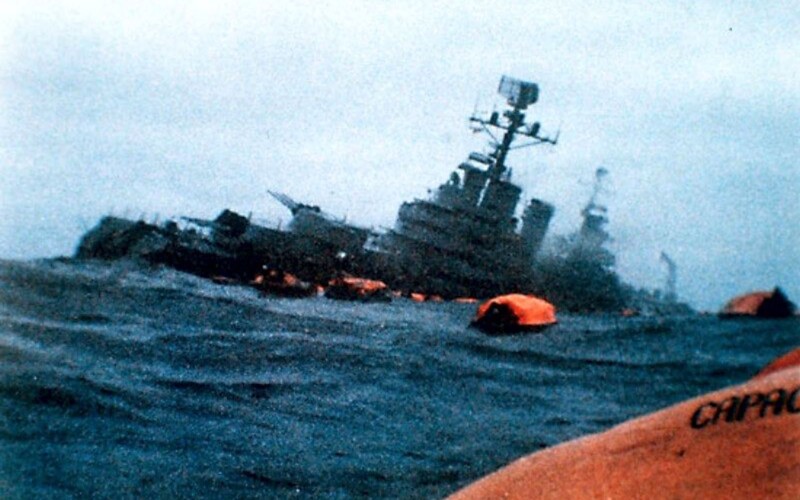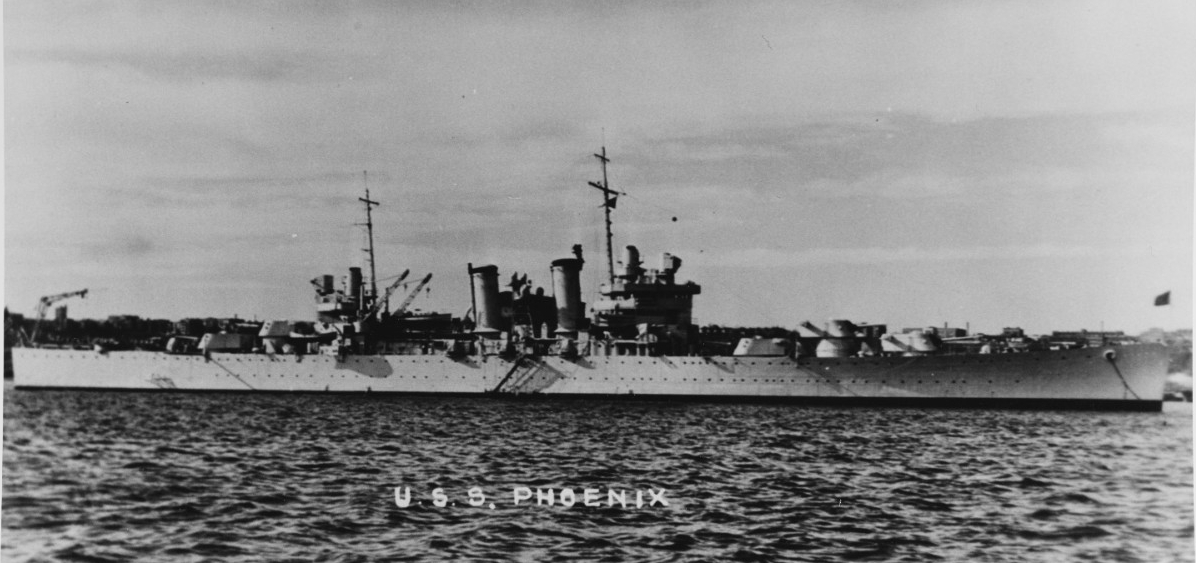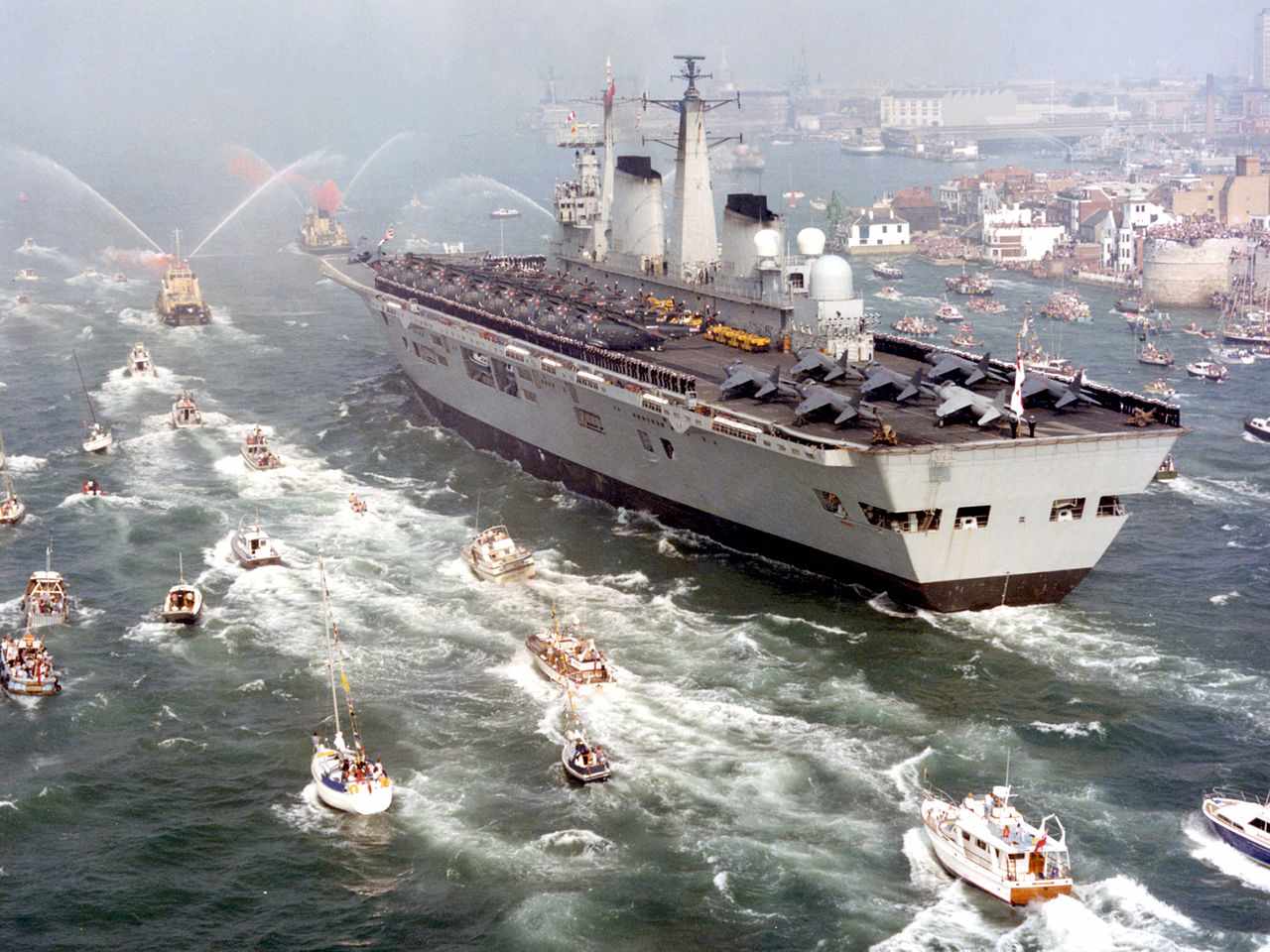This year commemorates the 42nd anniversary of a historic event in naval warfare: the sinking of a US-origin warship by a British nuclear-powered submarine.
On May 2, 1982, the British Churchill-class HMS Conqueror made history by becoming the first nuclear submarine to sink an enemy vessel when it torpedoed the ARA General Belgrano (formerly known as USS Phoenix – CL-46).
The Falklands War erupted on April 2, 1982, when Argentina launched an amphibious assault and captured the Falkland Islands, which had long been a point of contention between Argentina and Britain.
In response, the British government, led by Prime Minister Margaret Thatcher, swiftly dispatched a military task force of naval vessels, troops, and air support to reclaim the islands, marking the first major military engagement between modern powers since World War II.
Among the assets deployed were British nuclear hunter-killer submarines, including the HMS Conqueror, tasked with advanced reconnaissance and combat patrols in the waters surrounding the Falkland Islands.
The British government also declared a Maritime Exclusion Zone (MEZ) of 200 nautical miles around the islands, warning of attacks on any Argentine warships entering the zone.
Aware of the advancing British naval task force toward the Falkland Islands, Argentina deployed three naval groups to intercept the approaching British fleet following unsuccessful diplomatic endeavors to resolve the conflict.
The first naval contingent comprised the Argentine Navy’s lone aircraft carrier, the ARA Veinticinco de Mayo, accompanied by two Type 42 destroyers and three corvettes.
This formidable assembly sparked significant concern among British forces, prompting the dispatch of submarines, including the HMS Conqueror, to track and neutralize the Argentine aircraft carrier.
The Argentine aircraft carrier posed a grave threat to the British fleet, capable of inflicting substantial damage and impeding the success of any British amphibious assault on the Falkland Islands. The carrier was equipped with A-4Q Skyhawks naval attack aircraft.
The subsequent Argentine naval groups included the World War II-era light cruiser, the ARA General Belgrano, two World War II-era destroyers, and a fuel tanker in the second contingent. The third group comprised three corvettes armed with Exocet anti-ship missiles, further bolstering Argentina’s naval defense in the region.
How British Nuclear Submarine Sank The Belgrano
As the British fleet closed in on the Falkland Islands, immense pressure mounted on the Royal Navy submarines to detect and sink the Argentine ships.
On April 30, HMS Conqueror located the second naval group led by ARA General Belgrano. It maintained a discreet distance, trailing the Argentine contingent.
A relic of World War II, the Belgrano, a 13,500-tonne vessel of US origin, lacked sonar capabilities, rendering it defenseless against submarine threats. Over 30 hours and 400 miles, HMS Conqueror shadowed the Belgrano undetected.
Meanwhile, submarine HMS Splendid detected the first Argentine naval group, including the aircraft carrier, albeit briefly, as rough weather conditions hampered further tracking efforts.
Back in the United Kingdom, British war planners grew increasingly anxious about the threat posed by the Argentine naval groups to their task force. Prime Minister Thatcher recognized the hazardous logistical challenges, with the Falkland Islands situated 8,000 miles away from the British Isles.

The potential loss of British ships, particularly the invaluable aircraft carriers and vulnerable troop transport vessels, loomed large, risking substantial casualties and military capabilities. Moreover, such losses could sway public opinion against continued hostilities and jeopardize the British hold on the Falklands.
The Belgrano, meanwhile, received orders to conduct patrols in the waters south of the Malvinas, accompanied by two destroyers, the Piedrabuena and the Bouchard, in a region beyond the 200-mile military exclusion zone mandated by the United Kingdom.
On May 1, British intelligence intercepted communications, uncovering the Argentine naval groups’ plans for a pincer attack on the British fleet. With this intelligence, HMS Conqueror received orders to target and sink the ARA General Belgrano.
Utilizing three decidedly old-fashioned Mk 8 torpedoes, HMS Conqueror unleashed three strikes against the Belgrano on the evening of May 2. While two torpedoes found their mark, the third struck an escorting destroyer but failed to detonate.
The captains of the accompanying destroyers asserted that they remained unaware of General Belgrano being struck due to the darkness and electrical failure aboard the cruiser. They departed from the area and only realized the cruiser’s absence several hours later.
The attack claimed over 300 Argentine crew members, leaving the Belgrano crippled and sinking within minutes. The loss of the Belgrano sent shockwaves through the Argentine naval groups, prompting a strategic retreat to the port of the aircraft carrier ARA Veinticinco de Mayo as well as other vessels.
Within two days of the Belgrano’s sinking, the British destroyer Sheffield was struck down by an Exocet missile, becoming the first Royal Navy ship lost in combat since World War II.
However, with the Argentine Navy’s threat neutralized, the British naval task force successfully landed on the Falkland Islands on May 21, marking a pivotal moment in the conflict’s trajectory.
Abrams Tank: Russian UAVs ‘Wreak Havoc’ On US MBTs; Moscow Claims 5th Destruction Of ‘Deadly’ Abrams
The General Belgrano Was Formerly USS Phoenix (CL-46)
General Belgrano was originally commissioned as part of the Brooklyn class of light cruisers for the United States Navy. The warship played a major role in World War II before taking on a new identity in the service of Argentina.
From its beginning to its unfortunate end in the Falklands conflict, General Belgrano, previously named the USS Phoenix, witnessed numerous vital missions for its operators.
The genesis of the USS Phoenix can be traced back to the aftermath of the London Naval Treaty of 1930. With restrictions placed on battleship construction, major naval powers turned their attention to cruisers to project power and maintain naval supremacy.
The Brooklyn class, to which the Phoenix belonged, was designed to comply with the treaty’s limitations while providing formidable firepower and speed.
Armed with 15 6-inch guns and capable of reaching speeds of 33 knots, the Brooklyn represented a new breed of light cruisers intended to serve alongside battleships in combat.

Theoretically, these vessels were tasked with laying down suppressive fire to deter enemy destroyers and torpedo attacks. In practice, the rapid reload time of their guns rendered them nearly as effective as heavy cruisers armed with larger caliber weapons.
The USS Phoenix entered service in late 1938 and quickly found itself embroiled in the conflict of World War II. From the waters of the Pacific to the shores of the Philippines, the ship played a vital role in numerous campaigns and engagements.
The USS Phoenix was stationed at Pearl Harbor during the infamous attack, yet remarkably managed to emerge from the devastation unscathed. Following the chaos of the assault, by the afternoon, the Phoenix found itself actively engaged as a crucial component of a task force deployed to pursue the Japanese fleet.

In the early months of 1942, the vessel embarked on a voyage to the South Pacific, where it became embroiled in a series of fruitless endeavors aimed at impeding the Japanese advance into the Dutch East Indies.
The ship did not see much activity after that and was absent from the Solomons Campaign. The Phoenix spent much of 1943 in extensive overhaul and refurbishment, and it returned to the front lines in December of that same year, prepared to rejoin the war.
It participated in the Battle of Surigao Strait in October 1944, contributing to the destruction of the Japanese battleship HIJMS Yamashiro.
The end of the war marked a new chapter in Phoenix’s storied history. In 1951, the ship was sold to Argentina, where it was rechristened as the Diecisiete de Octubre, signaling a new era of naval power in the Southern Cone.
Alongside its sister ship, the Boise, the former USS Phoenix bolstered the capabilities of the Argentine Navy, replacing aging dreadnoughts dating back to the early 20th century.
Under its new name, the General Belgrano, the ship underwent modernization efforts in 1968, including the installation of British Sea Cat missile launchers.
Despite its advanced weaponry, the Belgrano met its tragic end during the Falklands War in 1982. Sunk by the British attack submarine HMS Conqueror, the vessel went down with 323 lives.
The sinking of the General Belgrano remains a subject of controversy and debate, with questions lingering over the legality and necessity of the attack.
- Contact the author at ashishmichel(at)gmail.com
- Follow EurAsian Times on Google News




